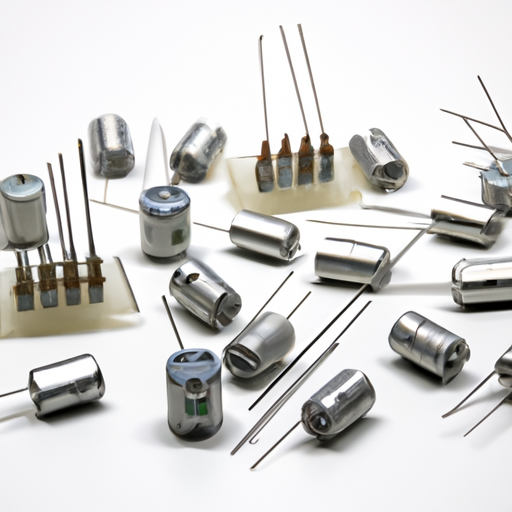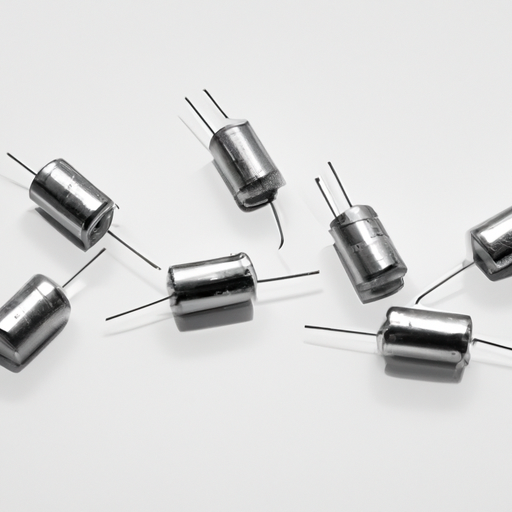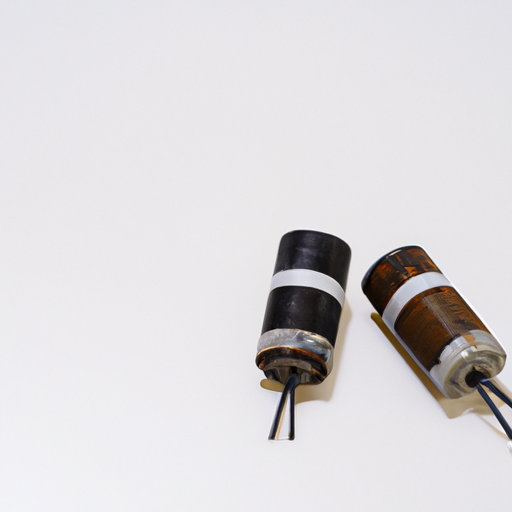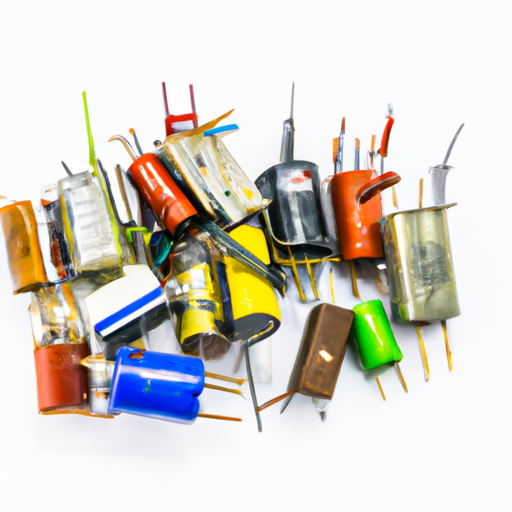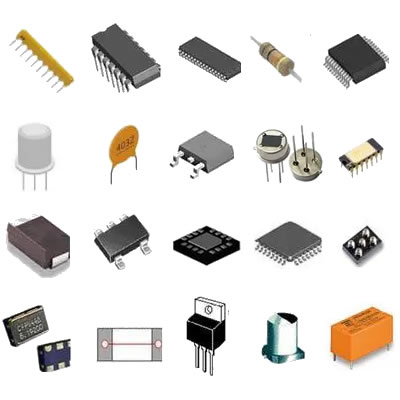What are the manufacturing processes for the capacity of the latest capacitors?
Manufacturing Processes for the Latest Capacitors
I. Introduction
Capacitors are essential components in modern electronics, serving as energy storage devices that can release energy quickly when needed. They play a crucial role in various applications, from power supply circuits to signal processing in communication devices. As technology advances, so does the demand for capacitors with higher capacity, efficiency, and reliability. This blog post explores the manufacturing processes behind the latest capacitors, highlighting the innovations that have emerged in this field.
II. Types of Capacitors
Capacitors come in various types, each with unique characteristics and applications. Understanding these types is essential for grasping the manufacturing processes involved.
A. Ceramic Capacitors
Ceramic capacitors are widely used due to their small size and high capacitance values. They are made from ceramic materials that act as dielectric substances. These capacitors are commonly found in high-frequency applications, such as RF circuits and decoupling applications.
B. Electrolytic Capacitors
Electrolytic capacitors are known for their high capacitance values and are often used in power supply circuits. They consist of an electrolyte and a metal oxide layer, which serves as the dielectric. Their ability to store large amounts of energy makes them ideal for applications requiring significant energy storage.
C. Film Capacitors
Film capacitors utilize thin plastic films as dielectric materials. They are known for their stability and low loss characteristics, making them suitable for audio and high-frequency applications. Film capacitors are also used in power electronics due to their reliability.
D. Tantalum Capacitors
Tantalum capacitors are known for their high capacitance in a small package. They use tantalum metal as the anode and are often used in applications where space is limited, such as in mobile devices and medical equipment.
E. Supercapacitors
Supercapacitors, or ultracapacitors, are energy storage devices that bridge the gap between traditional capacitors and batteries. They can store large amounts of energy and release it quickly, making them ideal for applications in renewable energy systems and electric vehicles.
III. Key Manufacturing Processes
The manufacturing of capacitors involves several key processes that ensure their performance and reliability.
A. Material Selection
The first step in capacitor manufacturing is material selection. The choice of dielectric and conductive materials significantly impacts the capacitor's performance. Dielectric materials must have high permittivity and low loss characteristics, while conductive materials need to exhibit excellent conductivity and stability.
B. Dielectric Layer Formation
The dielectric layer is crucial for a capacitor's function. Different techniques are employed based on the type of capacitor:
1. **Techniques for Ceramic Capacitors**: The dielectric layer in ceramic capacitors is formed by sintering ceramic powders at high temperatures. This process creates a dense, uniform layer that enhances the capacitor's performance.
2. **Techniques for Film Capacitors**: For film capacitors, the dielectric layer is created by extruding and stretching thin plastic films. The films are then metallized to form electrodes, ensuring a strong bond between the dielectric and conductive layers.
C. Electrode Fabrication
Electrode fabrication is another critical step in capacitor manufacturing. Various methods are used to create electrodes, including:
1. **Methods for Creating Electrodes**: In ceramic capacitors, electrodes are typically made by applying a conductive paste to the dielectric layer and then firing it. For film capacitors, the metallization process involves depositing a thin layer of metal onto the dielectric film.
2. **Importance of Electrode Materials**: The choice of electrode materials affects the capacitor's performance, including its voltage rating and equivalent series resistance (ESR). Common materials include aluminum, tantalum, and silver.
D. Assembly Processes
Once the dielectric and electrodes are prepared, the assembly process begins:
1. **Layer Stacking and Winding**: For multilayer capacitors, layers of dielectric and electrodes are stacked and pressed together. In the case of film capacitors, the dielectric film is wound into a cylindrical shape, creating a compact design.
2. **Encapsulation and Sealing**: After assembly, capacitors are encapsulated to protect them from environmental factors. This process involves sealing the capacitor in a protective casing, which can be made from plastic or metal, depending on the application.
E. Quality Control and Testing
Quality control is vital in capacitor manufacturing to ensure reliability and performance:
1. **Electrical Testing Methods**: Capacitors undergo various electrical tests, including capacitance measurement, leakage current testing, and ESR testing. These tests help identify any defects in the manufacturing process.
2. **Reliability Testing**: Capacitors are subjected to stress tests, such as temperature cycling and humidity exposure, to evaluate their long-term reliability. This testing ensures that capacitors can withstand the conditions they will encounter in real-world applications.
IV. Advanced Manufacturing Techniques
As technology evolves, so do the manufacturing techniques used in capacitor production.
A. Thin-Film Technology
Thin-film technology has revolutionized capacitor manufacturing by allowing for the production of capacitors with extremely thin dielectric layers. This results in higher capacitance values and improved performance in smaller packages. Thin-film capacitors are increasingly used in high-frequency applications and advanced electronics.
B. Nanotechnology in Capacitor Manufacturing
Nanotechnology has introduced new materials and processes that enhance capacitor performance. By manipulating materials at the nanoscale, manufacturers can create capacitors with improved energy density, faster charge/discharge rates, and greater reliability. This technology is particularly promising for supercapacitors and energy storage applications.
C. Automation and Industry 4.0
The integration of automation and Industry 4.0 principles in capacitor manufacturing has significantly improved production efficiency. Automated processes reduce human error, increase precision, and allow for real-time monitoring of production lines. This shift towards smart manufacturing is essential for meeting the growing demand for high-quality capacitors.
V. Environmental Considerations
As the electronics industry grows, so does the need for sustainable manufacturing practices.
A. Sustainable Materials and Processes
Manufacturers are increasingly focusing on using sustainable materials and processes to reduce their environmental impact. This includes sourcing eco-friendly dielectric materials and minimizing waste during production.
B. Recycling and Disposal of Capacitors
Proper recycling and disposal of capacitors are crucial for minimizing environmental harm. Many manufacturers are developing programs to recycle old capacitors, recovering valuable materials and reducing landfill waste.
C. Regulatory Compliance and Standards
Compliance with environmental regulations and standards is essential for capacitor manufacturers. Adhering to these guidelines ensures that products are safe for consumers and the environment.
VI. Future Trends in Capacitor Manufacturing
The future of capacitor manufacturing is bright, with several trends shaping the industry.
A. Innovations in Materials
Research into new materials, such as organic dielectrics and advanced ceramics, is ongoing. These innovations promise to enhance capacitor performance, making them more efficient and reliable.
B. Emerging Applications in Renewable Energy
As the world shifts towards renewable energy sources, capacitors will play a vital role in energy storage systems. Their ability to store and release energy quickly makes them ideal for applications in solar and wind energy systems.
C. The Role of Capacitors in Electric Vehicles and Energy Storage Systems
Capacitors are becoming increasingly important in electric vehicles (EVs) and energy storage systems. Their ability to provide quick bursts of energy makes them essential for improving the performance and efficiency of these technologies.
VII. Conclusion
In summary, the manufacturing processes for the latest capacitors are complex and multifaceted, involving material selection, layer formation, electrode fabrication, assembly, and rigorous testing. As technology continues to advance, manufacturers are adopting innovative techniques and materials to meet the growing demands of modern electronics. The significance of ongoing research and development in capacitor technology cannot be overstated, as it will shape the future of energy storage and electronic devices. With a focus on sustainability and efficiency, the capacitor manufacturing industry is poised for exciting developments in the years to come.
VIII. References
- Academic journals on capacitor technology and materials science.
- Industry reports detailing advancements in capacitor manufacturing.
- Manufacturer specifications and guidelines for various types of capacitors.

